First, a disclaimer: This is flash novices experience. I confess, that I have just touched the tip of iceberg with flash photography and there might be a lot of aspects that I haven’t yet grasp precisely. In case you feel that some things need to be corrected or expanded, please feel free to join and add your opinions below – they will certainly be useful to me, and might well be to others too.
And in case you wonder why I would go as far to write all this without being an expert on the subject? The short answer is that because I can… A longer one, would be that starting to learn flash involved a steep learning curve caused by far too many variables and too much information, which in some cases looked like it contradicted itself. Because of this, what I’m sharing here more like “my way to use flash” and much less of “tutorial on how to learn flash”, but hopefully it will be helpful, or at least interesting, regardless…?
Why do I think of flash?
We’ve all heard of the phrase “love-hate relationship”. In my attitude toward digital photography, I think I invented new variation of that which I call a “hope-estrangement relationship“.
I love to shoot and I love to shoot film, but on some occasions, it’s becoming a bit of a problem – the prices, ability to shoot in the dark without tripod, some work-related shots that are not worthy of film. Digital cameras should tick all those boxes, and some of them look just about perfect on paper, but in my world, after acquiring them and making a few hundred frames with them, they just end up sitting on the shelf – and I don’t understand why… The results digital gives today are nothing short of a wonder. Is it easy to take the shot? Are the photos too perfect? Does the lack of hassle with all the loading / rewinding / developing / scanning process make if feel unrewarding? I don’t feel that I have a complete answer for myself, but the fact remains fact – I don’t connect.
I started to create workarounds to be able to live without digital. Most shots can be done on a phone, but what to do when I want to shoot with proper camera in low light? One of answers is to push film, but it’s not convenient in cases where other frames in same roll will be exposed under normal light.
Of course, there is an answer, a good one too. The answer I have tried to avoid for a long time! That answer is flash.
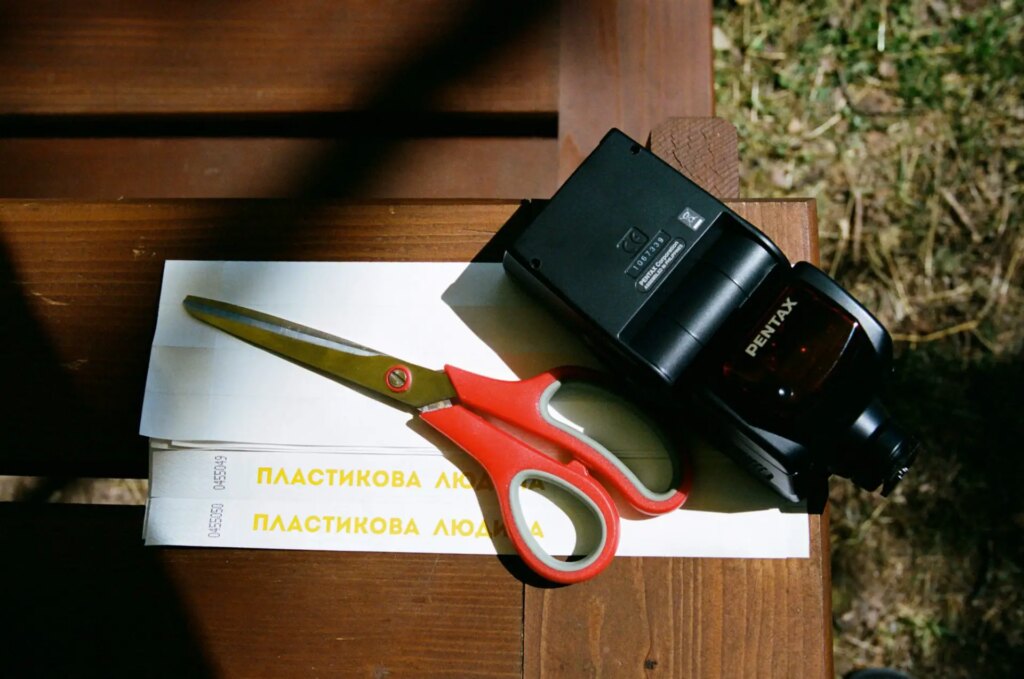 Pentax MZ-S, SMC Pentax-FA 31mm 1.8 AL Limited, Kodak Portra 400
Pentax MZ-S, SMC Pentax-FA 31mm 1.8 AL Limited, Kodak Portra 400
Complications when starting to use flash
Flash, from, my hobbyist perspective, looking at a lot that amateurs like me like me shoot is in camera flash. This results in directly lit and often overexposed pictures. This creates a certain aesthetic that seems to be popular. But this wasn’t quite what I was looking for. Then, looking at good examples and trying to understand how they were achieved seemed too complicated. All the different settings, off camera flash, multiple light sources etc… too much to think about. Then when I started to read about manual flash settings and see formulas and tables used to determine flash-subject distance according to flash guide, aperture number, my head starts to ache. I thought that in order to do it properly I’d have to read half of camera and flash manuals and have an excel spreadsheet at the same time, which is not my wish when I simply want to take a shot.
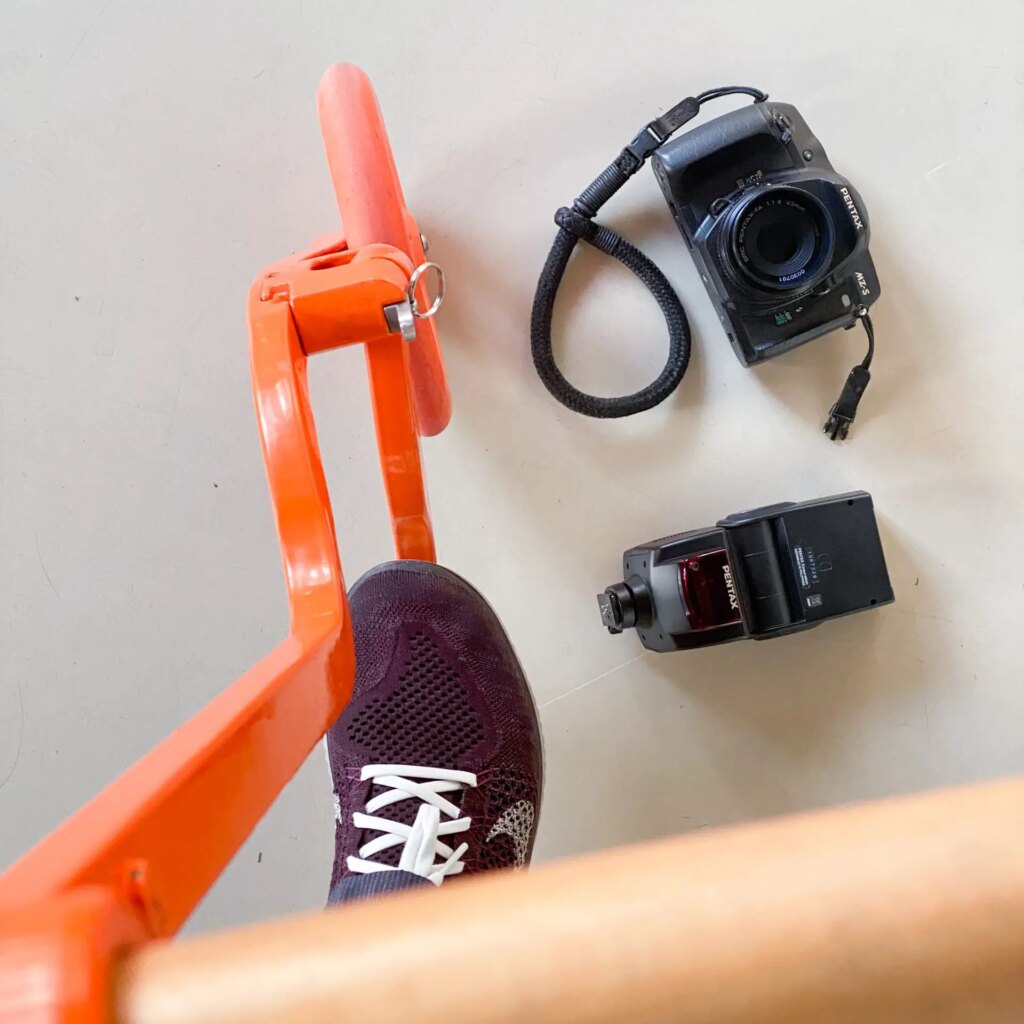
“Accidents” leads to new ways
But, luckily in reality things need not be so complicated as this. I started to understand it thanks to a small coincident.
Some time ago I tried to tame a rangefinder camera and it came with a flash. For a half a year this Konica HX-18W flash was laying in the box and then on one dark winter evening I took it out, and out of pure boredom started to puzzle out how it works. Well, the answer is obvious and simple – take a manual camera, manual flash, determine aperture and subject-flash distance, make myself an excel spreadsheet with all the variations and phew… just before throwing flash back to box I came to a chapter in the book on automatic flash function and the fact that this flash is some kind of miracle “thyristor” one. Wow! “Thyristor” – I didn’t know that word before…
I decided to take this opportunity and take some shots with it. I can take “thyristor” with me, how can I refuse? That was simpler than I thought. And I was hooked.
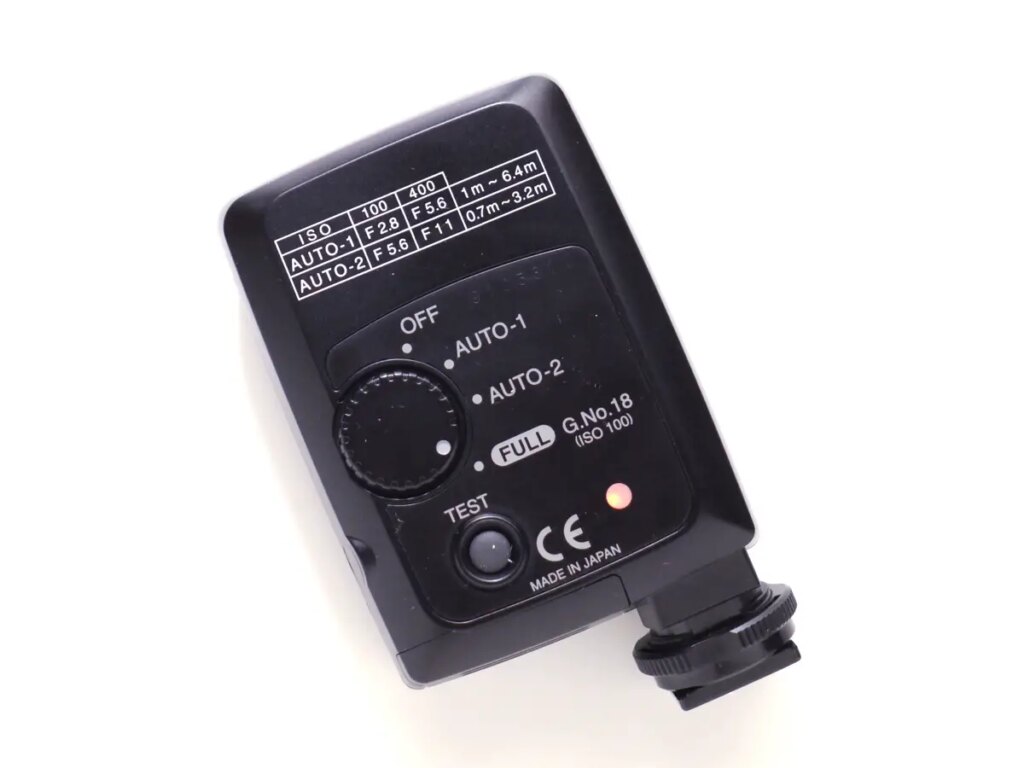
Using Thyristor Flash
In the case of Auto / thyristor flash things seemed a lot more straight-forward. On the back of the flash, right under my nose, I have all necessary information for flash shot. There are several auto settings for different flash strength / camera-subject distance. With my camera and flash, I don’t even have to set my camera shutter to the flash sync speed, it does it automatically. Though I should say, if you are coming to flash photography for the first time, it seems that it is worth it to do your homework and to study what flashgun would suit your camera best.
Then, according to the table on flash, I see which auto setting to choose according to ISO of the film which is presently in camera, and distance from me to the subject. I then set the indicated f/stop and fire… That’s all I needed to know to make this work for me. There was no need to make complicated calculations before each shoot. In some cases, I have a choice of f/stop, because settings on flash table overlaps. For example, with my flash if I have have an ISO 100 film and I’m stood 2 meters from subject, I could shoot f/2.8 or f/5.6 and this choice is very good – I am able to select my depth of field according to my creative vision.
At this point, I’ll state the most important aspect that I learned while shooting with auto flash, that is that it works! There are hits and misses, but in general, I can forget complicated approach and just enjoy the shooting without any distraction. Adjusting rudiment settings of auto flash became second nature very fast and I can simply have fun.
This magical thyristor thing kind of broke the ice for flash photography and I was motivated to make next steps.
 Konica Hexar RF, Konica M-Hexanon 50mm f2, Konica HX-18W flash, Kodak Portra 400
Konica Hexar RF, Konica M-Hexanon 50mm f2, Konica HX-18W flash, Kodak Portra 400
What is auto / thyristor flash
A few remarks about how auto / thyristor flash works: There is a separate, independent light sensor on the flash. It looks like small hole on the front of flash gun. It measures light reflected from scene and in camera light reading is not used in this case. The flash is preprogrammed to expose “correctly” in the limits of the auto setting that was set and in the limits of the table which is printed on its back. The sensor on the flash just “cuts” the emission of the flash to an amount of light is “enough” for this exposure. This cut in power is helping not only to expose correctly, but also saves energy for next recharging of flash.
Why it was confusing to me – shutter speed.
After using Konica flash, I realised at least one reason why flash was very confusing to me. You see, I’m totally self-thought photography hobbyist and I learned exposure old-school way, by the exposure triangle (ISO, shutter speed, aperture). And in flash photography this triangle works, but at first it looks that it doesn’t. For example, you can set almost any shutter speed lower than flash sync speed shutter speed on camera, and the amount of exposure from the flash on main subject will be the same, so in this case looks like the exposure triangle doesn’t work…?
But it works. An actually it’s quite simple.
Say you try to shoot a person in dimly lit outside situation that without would require 1/8 shutter speed with f/2 aperture, using ISO400 film. Use a flash to light the subject, and the flash emitted light is strong, it lights the subject and will well overpower the ambient light on the subject. That is an important thing to keep in mind. What is also important to keep in mind is that flash light impulse takes about 1/1000 of the second. Now the sync speed on many cameras it tops out at maybe 1/125, 1/60 sec or similar. This is a relatively slow shutter speed compared to the duration of the flash. And this is the max sync speed, the slower speeds will still be synced if you choose to use them.
Let’s decide that sync speed for our theoretical camera is 1/60th. Getting back to my example. For ambient light 1/8 shutter speed with f2 aperture, using ISO400 film. Whereas with the flash, the settings say to use 1/60 shutter speed and f/11 aperture. That’s a difference of 7 stops. In case you use these settings without flash, the exposure would likely be almost black. If you use the flash lights the scene and the subject in foreground will be properly exposed but with dark background. So the flash as given 7 stops of light to light onto to subject for a limited amount of time of 1/1000 of the second. As the background was not lit by flash, it was exposed according to camera settings and so remained dark, ie. it was almost not exposed at all. We are coming to point where I understood that the flash in this case was not only giving the light, but was also acting as a sort of “shutter” for the subject.
Basically, we have something like two sets of exposures, two shutter speeds working for the same frame at the same time: one is set on camera and it has to be set equal or slower than flash sync speed. This speed gives exposure to parts of scene where flash light doesn’t reach. The flash “shutter speed” is the other, and it determines the exposure of where flash light can reach, ie. the subject. And how do you know how far the flash light can reach? Well, it’s written on the auto flash… The closer the subject, the brighter they might be, but simply setting the right aperture for the distance will give the right result.
 Pentax MZ-3, SMC Pentax-FA* 24mm F2 AL [IF], AF 280T flash, Kodak Portra 400
Pentax MZ-3, SMC Pentax-FA* 24mm F2 AL [IF], AF 280T flash, Kodak Portra 400
What’s interesting is that this can give you more creative opportunities. Let’s dive deeper. Our situation, gave us properly lighted subject and totally dark background. The camera meter tells us that in order to get “proper” exposure of all of the scene we have to use 1/8 shutter speed with f2 aperture, but the flash says, that we should use f/11 and shutter has to be set not higher than “sync” speed of 1/60. But, we do have an opportunity to crank shutter speed to lower. And the lower the shutter speed we use, the more of the background will also be exposed.
What makes this interesting is we then have a high shutter speed of 1/1000th of a second the freezes the subject, and a potentially much slower speed that captures background detail. This technique is called slow sync flash and can result in some very interesting where the flash appears to freeze the subject in front of a background with lots of motion blur. This is especially the case where the camera isn’t supported by a tripod, as in such cases even static background objects become motion blurred. This effect is called shutter drag.
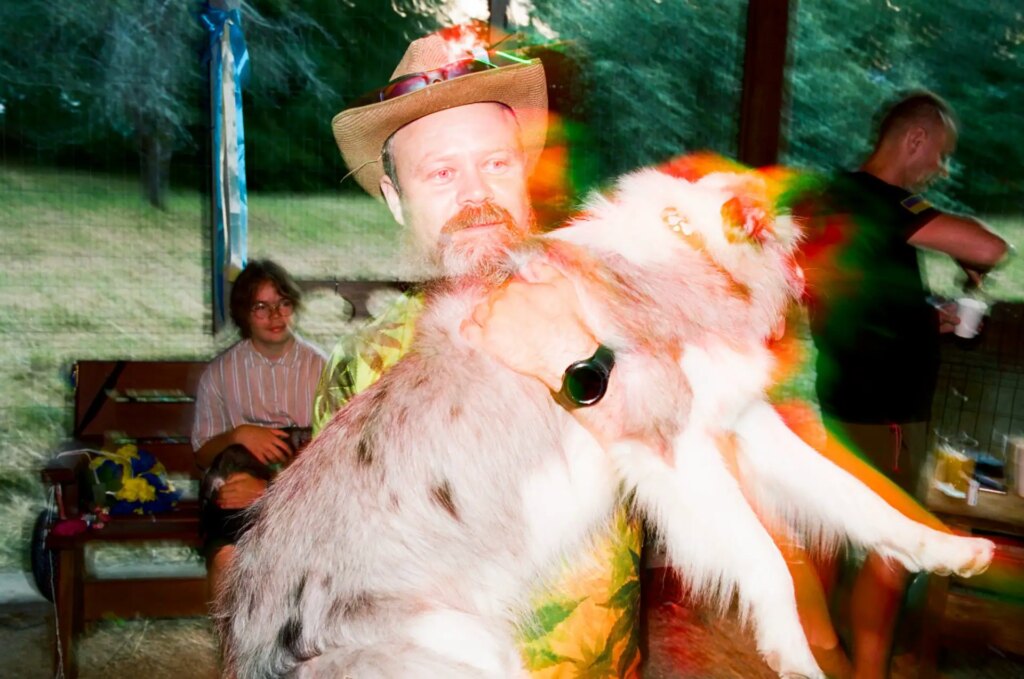 Pentax MZ-S, SMC Pentax-FA 31mm 1.8 AL Limited, Pentax AF 360FGZ Flash, Kodak Portra 400
Pentax MZ-S, SMC Pentax-FA 31mm 1.8 AL Limited, Pentax AF 360FGZ Flash, Kodak Portra 400
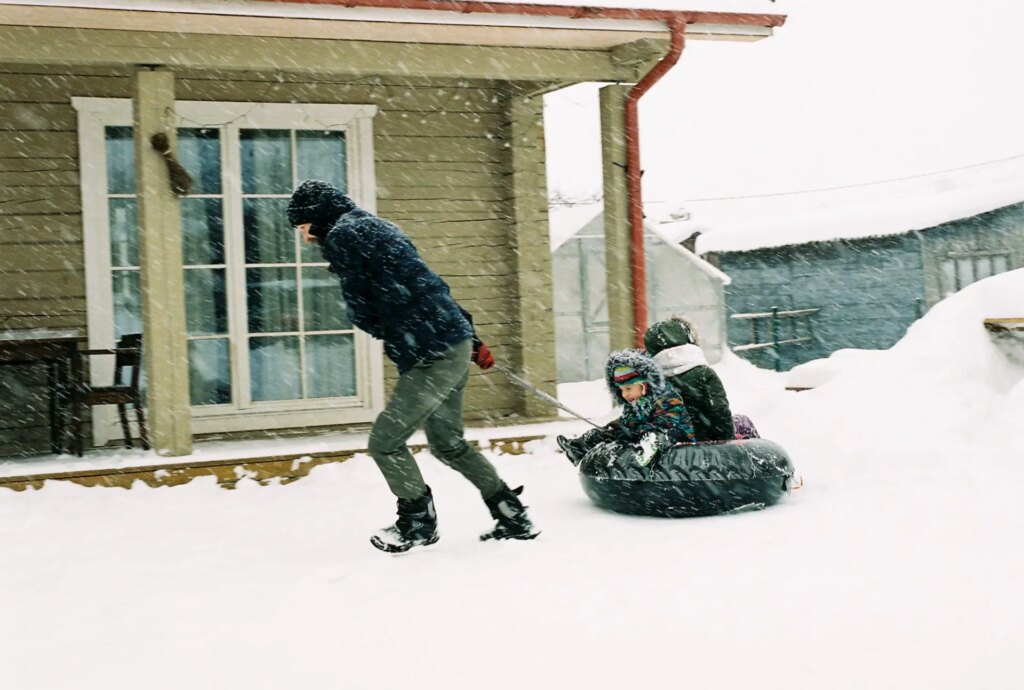 Konica Hexar RF, Konica M-Hexanon 50mm f2, Konica HX-18W flash, Kodak Portra 400
Konica Hexar RF, Konica M-Hexanon 50mm f2, Konica HX-18W flash, Kodak Portra 400
For me, understanding this meant all of it “clicked” in terms of how the exposure triangle works in flash photography.
Other considerations and things I have discovered
Of course, there’s a lot more to this than my auto-flash on my particular camera. In fact, it’s a very wide topic. Abilities to use external flashgun depends on flash specifications, camera specifications and combination of flashgun and camera. And there’s loads more I’m now exploring: TTL flash, high speed sync, second shutter curtain sync etc. In my case, at the moment I use Pentax AF 280T Flash on LX and MZ-3 and Pentax AF 360FGZ Flash on MZ-S – this particular combination gives a wide array of possibilities!
TTL Flash vs. Auto flash
“TTL flash” was a phrase that was all over the internet, when I was starting to explore the topic. TTL flash means through-the-lens metering. In simple terms, TTL flash is a system where flashgun and camera body integrated metering systems “talk” to each other and in return gives you simple and hassle-free use of flash, with less limitations and simpler use comparing to Auto flash.
Auto flash doesn’t “know” what setting are being used on your camera and relies on one sensor in flashgun to get proper exposure of main photo subject. And so, you have to adjust camera to flash settings. TTL “sees” what camera lens sees and adjusts flashgun to and with the camera’s settings. In short, TTL flash is next step in automation over Auto flash and as I’m for “using flash without straining my brain” it’s a very welcome system. But, just because it’s easier doesn’t mean it’s better.
And of course, this is where it can become a controversial topic. Some people will say that it’s ok to use fully automated TTL flash systems, whereas others will say that to be a true pro, you must shoot manual flash. This is just the same as the arguments around digital vs film, or SLRs vs rangefinders. There’s no real answer. As my needs and results are not professional level, and I’m happy about what I get, so for all flash automation is very welcome thing. Without it I wouldn’t be using flash. Yes, maybe my photos would be better if I go deeper, and maybe I will maybe I won’t, but that’s a future prospect. As of today I can only say, that paths has to start somewhere and the easier it starts easier is to decide to try.
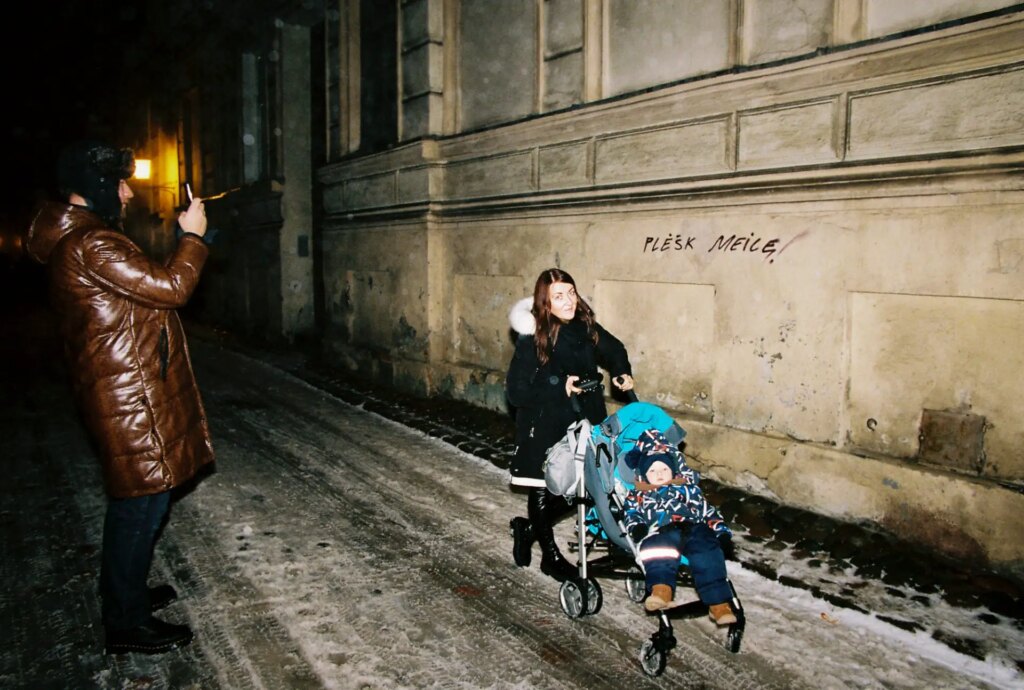 Pentax MZ-3, SMC Pentax-FA* 24mm F2 AL [IF], AF 280T flash, Kodak Portra 400
Pentax MZ-3, SMC Pentax-FA* 24mm F2 AL [IF], AF 280T flash, Kodak Portra 400
Direction of the flash
Another thing to consider is that direct “in the face” light is not always the best option. When looking for a flashgun I paid attention to possibility to have tilting or even tilting and swivelling flash head. Tilting head gives the option to direct flash light up and have it bounce from the ceiling and so to have non direct light that is less harsh. Though I should also add, rotating and tilting flash heads have a downside – usually flashguns are bigger when compared to fixed head models.
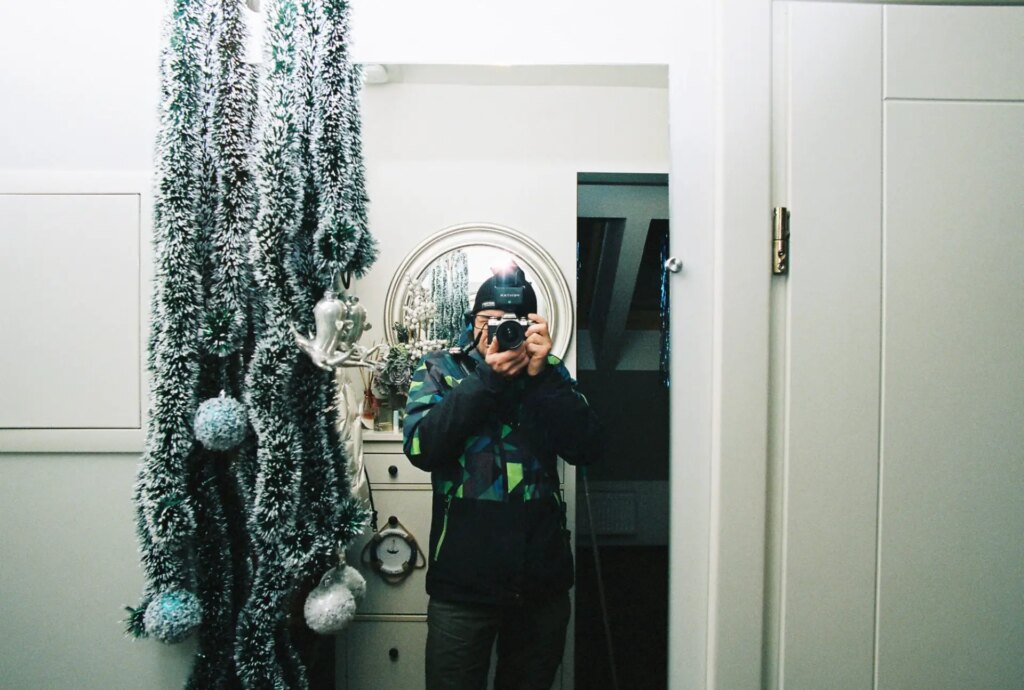 Pentax MZ-3, SMC Pentax-FA* 24mm F2 AL [IF], AF 280T flash, Kodak Portra 400
Pentax MZ-3, SMC Pentax-FA* 24mm F2 AL [IF], AF 280T flash, Kodak Portra 400
Camera shutter sync speed
I have mentioned “flash sync” speed about 86 times already, so I thought it would be worth to mentioning what it is. I have have said, the flash creates a burst of light for a limited and short amount of time. If this light were to hit the film at the moment when the shutter is closed, it will obviously not have any effect on photo. Therefore, flash emission moment and camera shutter opening must be synchronised. Ie the flash has to fire the same instance the shutter is open and moreover – it has to fire when ALL the shutter is open. This is how I understand “sync speed”.
Maximum flash sync speed is often relatively low on SLR film cameras, because the way the shutters work in these cameras. When you fire the shutter the two leaves of the shutter move in front of the film with a slit between them. The faster the speed the smaller the slit between the shutter blades. This means that if you fire the flash at these high speeds, it might only light a small slither of the film which isn’t ideal. And hence, you have to use at least the sync speed, but any other speed lower will work fine. Cameras with leaf shutters are arguably better suited to flash photography. But small leaf shutter cameras often don’t have interchangeable lenses, and interchangeable lens cameras that do have leaf shutters tend to be big medium format cameras which can be more cumbersome to carry. The solution I have found with my SLRs is something called HSS, or High Speed Sync.
High Speed Sync
While aperture both in natural light and flash photography performs the same function to control depth of field, it might seem that shutter speed may have more significance in flash photography. But there is more. I like to shoot wide open aperture even in daylight and it turns out that the specifications of camera body and flashgun lets me do so even using flash with something called HSS flash. HSS is “High speed sync” flash. It’s the way to overcome maximum flash sync limitation. My unscientific understanding is that flash performs not one “short” flash, but a series of flashes that lights all the frame. A combination of Pentax MZ-S and AF 360FGZ flash lets me shoot with full flash sync up to 1/6000 seconds! This means that I can shoot wide open portraits in full daylight filling the shadows with flash. This gives a bit of life to portraits and the light doesn’t seem artificial to my eyes.
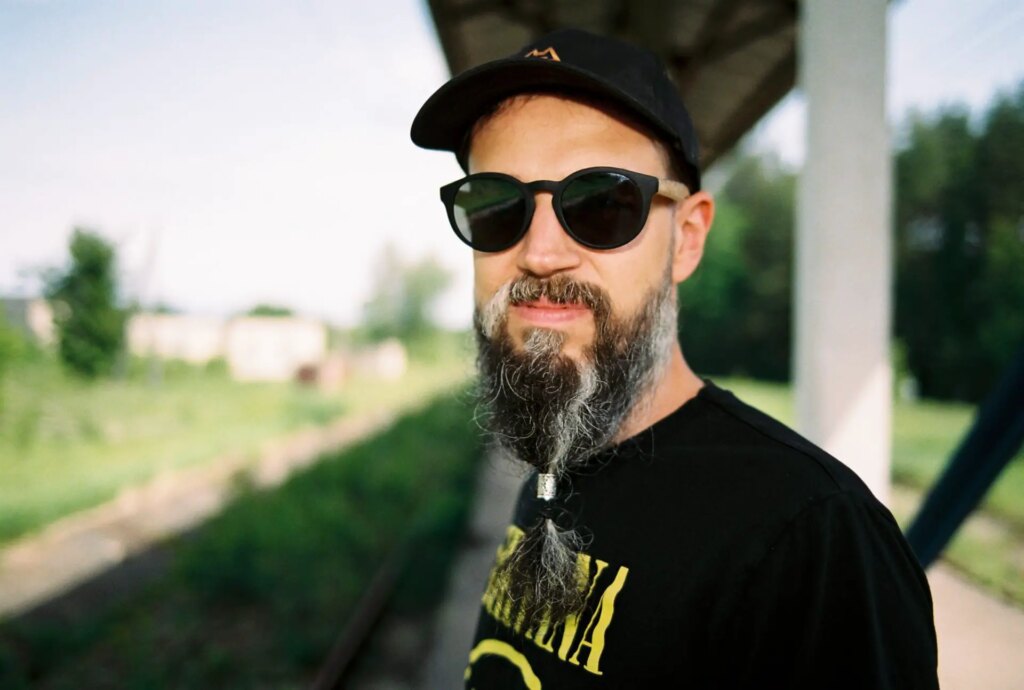 Pentax MZ-S, SMC Pentax-FA 31mm 1.8 AL Limited, Pentax AF 360FGZ Flash, Kodak Portra 400
Pentax MZ-S, SMC Pentax-FA 31mm 1.8 AL Limited, Pentax AF 360FGZ Flash, Kodak Portra 400
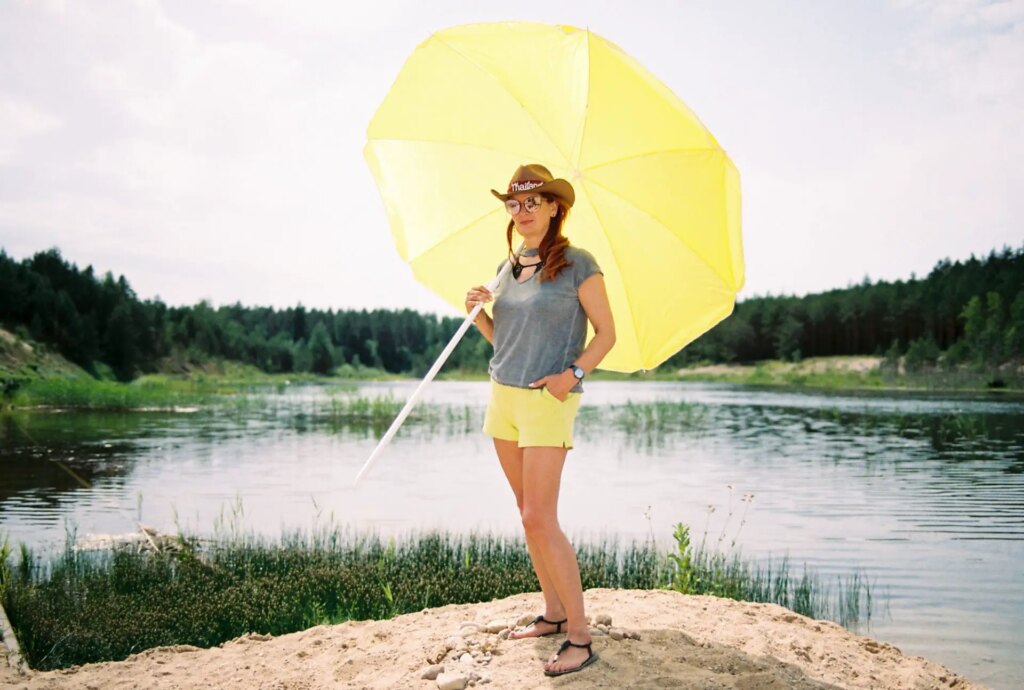 Pentax MZ-S, SMC Pentax-FA 31mm 1.8 AL Limited, Pentax AF 360FGZ Flash, Kodak Portra 400
Pentax MZ-S, SMC Pentax-FA 31mm 1.8 AL Limited, Pentax AF 360FGZ Flash, Kodak Portra 400
First and second curtain flash
I have already talked about slow sync flash, but there are options within this that I am discovering. These are first and second curtain sync. First curtain fires the flash just after the shutter opens, second curtain fires it just before the shutter closes. This can bring all sorts of creative opportunities which I am just beginning to discover.
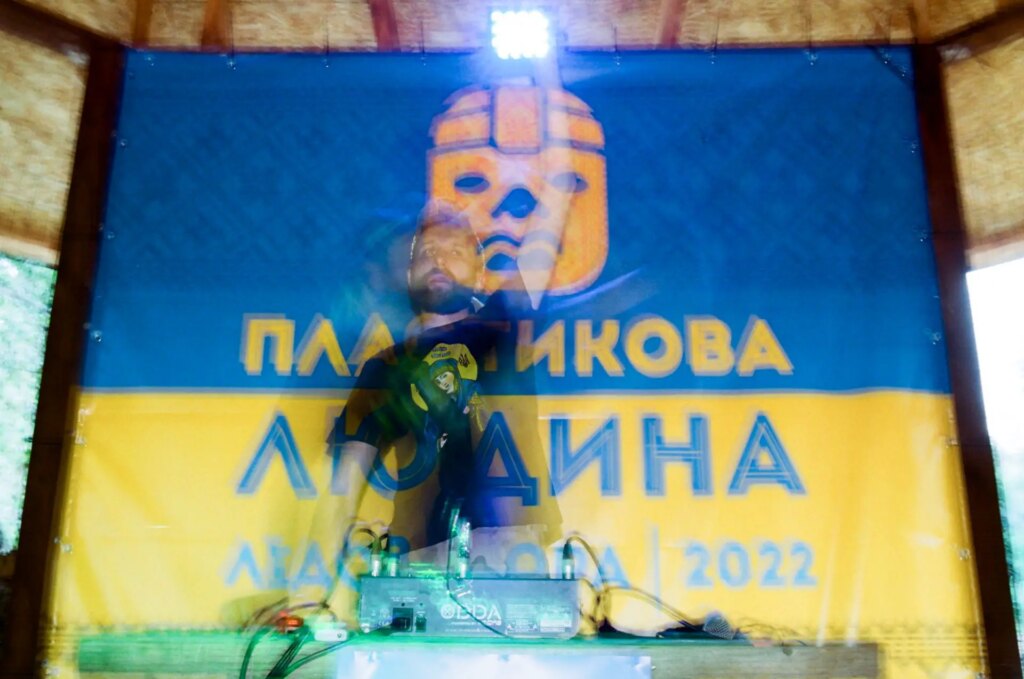 Pentax MZ-S, SMC Pentax-FA 31mm 1.8 AL Limited, Pentax AF 360FGZ Flash, Kodak Portra 400
Pentax MZ-S, SMC Pentax-FA 31mm 1.8 AL Limited, Pentax AF 360FGZ Flash, Kodak Portra 400
Final Thoughts
I think that covers my personal “flash illuminated” path that I have walked so far, from first use of flash and up to this date. I’m still on it and the upcoming darker season gives more motivation to shoot with artificial light. I will and I will learn something new, as I mentioned at the start, I’m just at the beginning. I still don’t know how to use this magical flash guide number, aperture, distance formula. I still feel that it would give me a headache… but maybe that will change…
Stay in the light!
Aivaras
www.beautifulgrain.com
Share this post:
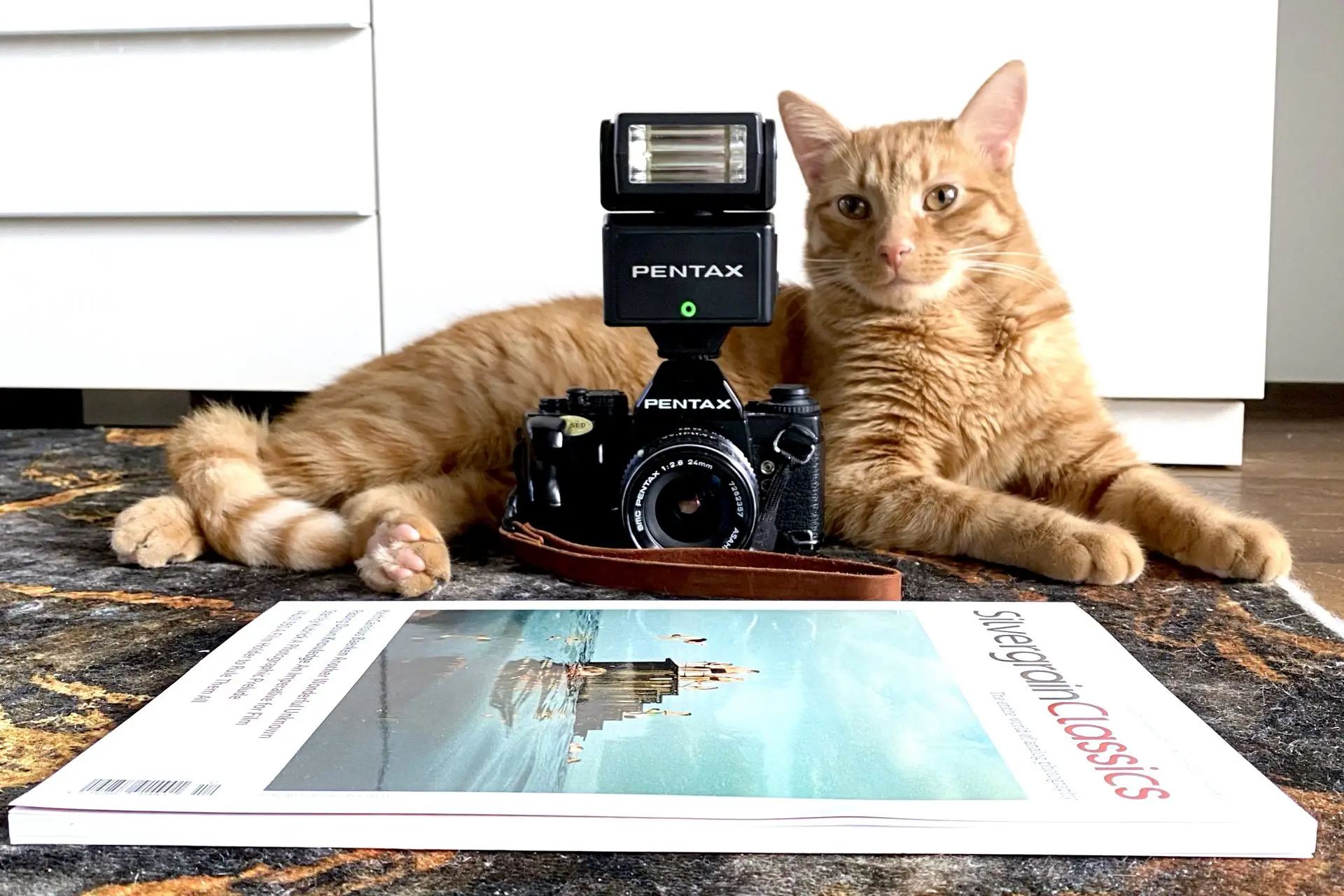








Comments
Phil Jodgkinson on Starting to Learn Flash – Hurdles and Discoveries So Far – By Aivaras
Comment posted: 08/12/2022
Ted Ayre on Starting to Learn Flash – Hurdles and Discoveries So Far – By Aivaras
Comment posted: 08/12/2022
Comment posted: 08/12/2022
Armando Caballero on Starting to Learn Flash – Hurdles and Discoveries So Far – By Aivaras
Comment posted: 10/12/2022
Comment posted: 10/12/2022
Scott Gitlin on Starting to Learn Flash – Hurdles and Discoveries So Far – By Aivaras
Comment posted: 11/12/2022